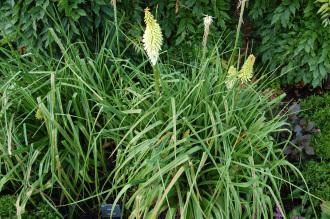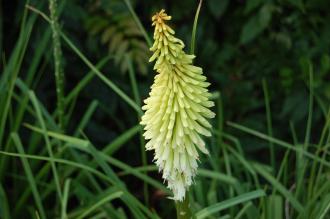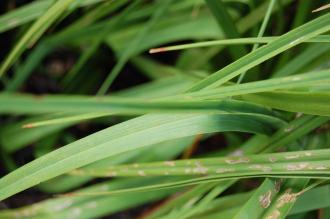
Kniphofia ‘Ice Queen’ (17/08/2014, Kew Gardens, London)
Position: Full sun to partial shade
Flowering period: Summer
Soil: Moist, well drained
Eventual Height: 1.2m
Eventual Spread: 60cm
Hardiness: 7a, 7b, 8a, 8b, 9a, 9b, 10a, 10b
Family: Xanthorrhoeaceae
Subfamily: Asphodeloideae
Kniphofia ‘Ice Queen’ is an evergreen perennial with an upright, clump forming habit. Its gray green leaves are strap shaped and channeled. Its green/ white/ yellow flowers are tubular and borne in dense terminal racemes at the ends of erect stems. Its roots are rhizomes which may aid its spread.

Kniphofia ‘Ice Queen’ Flower (17/08/2014, Kew Gardens, London)
The genus Kniphofia, commonly known as the Red Hot Poker, are native to south Africa. In its native habitat it grows in mountain grasslands. In south east Australia Kniphofia has become naturalised and regarded as an environmental weed.
The etymological root of the binomial name Kniphofia was named for Professor Johann Hieronymus Kniphof, an 18th century botanist.
The landscape architect may find Kniphofia ‘Ice Queen’ useful as an evergreen perennial with an architectural habits. It is tolerant of a maritime climate. Once established this plant is drought tolerant.
Ecologically, Kniphofia ‘Ice Queen’ flowers are attractive to pollinating insects and nectar loving birds.

Kniphofia ‘Ice Queen’ Leaf (17/08/2014, Kew Gardens, London)
Kniphofia ‘Ice Queen’ prefers moist, deep, well-drained soils. It prefers an acid to neutral pH of soil.
Kniphofia ‘Ice Queen’ requires little maintenance. Plants may be cut back after flowering to maintain a tidy appearance. Large clumps may be divided in spring.

